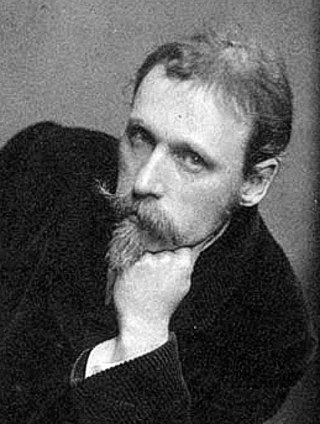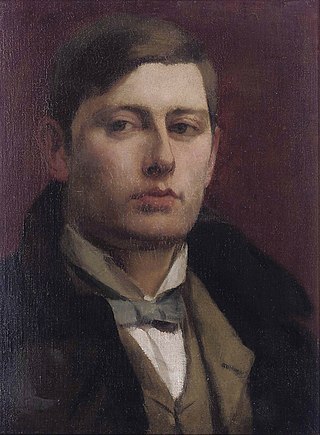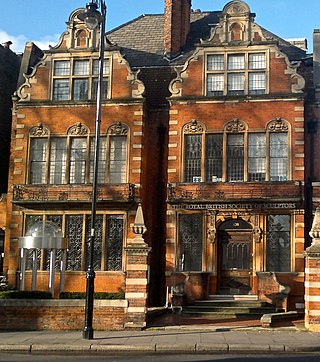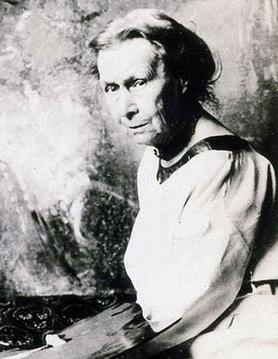Related Research Articles

Sir William Hamo Thornycroft was an English sculptor, responsible for some of London's best-known statues, including the statue of Oliver Cromwell outside the Palace of Westminster. He was a keen student of classical sculpture and was one of the youngest artists to be elected to the Royal Academy, in 1882, the same year the bronze cast of Teucer was purchased for the British nation under the auspices of the Chantrey Bequest.

Sir Anthony Alfred Caro was an English abstract sculptor whose work is characterised by assemblages of metal using 'found' industrial objects. He began as a member of the modernist school, having worked with Henry Moore early in his career. He was lauded as the greatest British sculptor of his generation.

Walter Crane was an English artist and book illustrator. He is considered to be the most influential, and among the most prolific, children's book creators of his generation and, along with Randolph Caldecott and Kate Greenaway, one of the strongest contributors to the child's nursery motif that the genre of English children's illustrated literature would exhibit in its developmental stages in the later 19th century.

Sir George James Frampton, was a British sculptor. He was a leading member of the New Sculpture movement in his early career when he created sculptures with elements of Art Nouveau and Symbolism, often combining various materials such as marble and bronze in a single piece. While his later works were more traditional in style, Frampton had a prolific career in which he created many notable public monuments, including several statues of Queen Victoria and later, after World War I, a number of war memorials. These included the Edith Cavell Memorial in London, which, along with the Peter Pan statue in Kensington Gardens are possibly Frampton's best known works.

The Royal Society of Sculptors (RSS) is a British charity established in 1905, which promotes excellence in the art and practice of sculpture. Its headquarters are a centre for contemporary sculpture on Old Brompton Road in South Kensington, London. It is the oldest and largest organisation dedicated to sculpture in the UK. Until 2017, it was known as the Royal British Society of Sculptors.

Susan Collis is a British artist working in Hackney, London. She is known for crafting ordinary looking, everyday objects from valuable materials. In her approach to sculpture, Collis manages to elevate the mundane, celebrate traditional craft techniques, and encourage viewers to take second, closer looks.

Annie Louisa Swynnerton, ARA was a British painter best known for her portrait and symbolist works. She studied at Manchester School of Art and at the Académie Julian, before basing herself in the artistic community in Rome with her husband, the monumental sculptor Joseph Swynnerton. Swynnerton was influenced by George Frederic Watts and Sir Edward Burne-Jones. John Singer Sargent appreciated her work and helped her to become the first elected woman member at the Royal Academy of Arts in 1922. Swynnerton painted portraits of Henry James and Millicent Fawcett. Her main public collection of works are in Manchester Art Gallery, but individual works are also held in a few other English cities, as well as can also be seen in Glasgow, Dublin, Paris, and two in Melbourne, Australia. Annie was a close friend of leading suffragists of the day, notably the Pankhurst family.

Susan Hiller was a US-born, British conceptual artist who lived in London, United Kingdom. Her practice spanned a broad range of media including installation, video, photography, painting, sculpture, performance, artist's books and writing. A key figure in British art across four decades, she was best known for her innovative large-scale multimedia installations, and for works that took as their subject matter aspects of culture that were overlooked, marginalised, or disregarded, including paranormal beliefs – an approach which she referred to as "paraconceptualism".
Edward Alfred Briscoe Drury was a British architectural sculptor and artist active in the New Sculpture movement. During a long career Drury created a great number of decorative figures such as busts and statuettes plus larger monuments, war memorials, statues of royalty and architectural pieces. During the opening years of the 20th-century he was among the foremost architectural sculptors active in Britain and in that period created the series of works in central London for which he is perhaps now best known. These include the figures on the Old War Office building in Whitehall, elements of the facade of the Victoria and Albert Museum and four of the colossal statues on Vauxhall Bridge.
Founded in 1843, the School of Art & Design at Nottingham Trent University is one of the oldest in the United Kingdom.

Enid Crystal Dorothy Marx, RDI, was an English painter and designer, best known for her industrial textile designs for the London Transport Board and the Utility furniture Scheme. Marx was the first female engraver to be designated as a Royal Designer for Industry.
Chris Gilmour is a British sculptor based in Manchester. Gilmour is known for his sculptures that use cardboard to recreate everyday objects in life-size scale.

John Angel was a British-born sculptor, architectural and ecclesiastical sculptor, medallist and lecturer. He emigrated to the United States where he created architectural sculpture. His work in the United Kingdom and the United States has been critically praised.
Jennifer Durrant is a British artist.
Ann Sutton is a British artist, author, educator and broadcaster. She gained international recognition as an innovative textile artist and designer from the 1950s and has continued to develop her making and research in other media to the present day.
Jane Ackroyd is a British artist best known for her public sculptures. She is based in London.
Susan Durant Durant was a British artist and sculptor. She was one of the first female sculptors to achieve critical and financial success in Victorian Britain. Durant created a substantial body of work, often in marble and featuring characters from English literature or the Bible, but much of which has been lost.
Alice Lindley-Millican (1885–1930) was a British sculptor known for her figurative works.
Esther Mary Moore was a British artist known for her sculptures, metalwork and jewellery.
Edwin Roscoe Mullins was a British sculptor known for a number of architectural sculptures and smaller works featuring neo-classical figures.
References
- ↑ Sylviane Gold, "Maps for Navigating to a New Perspective", The New York Times, 3 December 2010.
- ↑ Robert Clark, "This week's new exhibitions – Susan Stockwell, York", The Guardian, 19 June 2010.